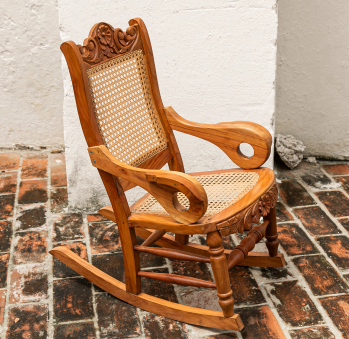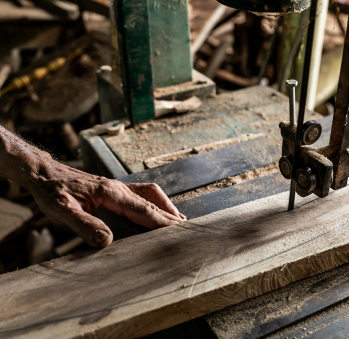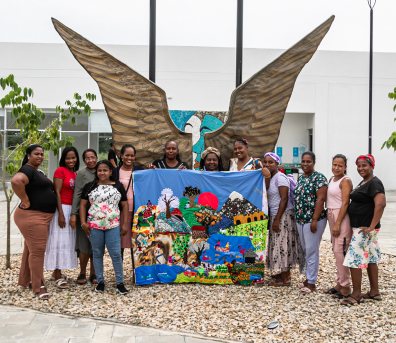Rodolfo Felizzola España
Workshop: Muebles Nancy
Craft: Woodwork
Trail: Bolívar Route
Location: Mompox, Bolívar
Everyone from Mompox knows about rocking chairs and filigree, and Rodolfo Felizzola is a perfect example of this. The connection between Mompox and furniture is something special, deeply rooted in both spirit and tradition; everyone has rocking chairs, whether for decoration or daily use, and it’s common to hear conversations about the origins of each piece, which master crafted it, and what year it was made. This artisan, who grew up watching the cabinetmakers in his neighborhood, will share one fascinating piece of history after another about his beloved heritage town.
As an important port for those heading to the heart of the country along the Magdalena River, Mompox had access to international trade, including furniture brought from Europe by the aristocracy. This is how the Thonet rocking chairs must have arrived, invented by the German Michael Thonet, who developed a revolutionary method of bending solid wood by steaming it. Everyone has seen a Thonet in a grandmother’s or aunt’s house—those lightweight, sleek rocking chairs where the curve of the base becomes the armrest, with a woven rattan back and seat. Rodolfo’s theory is that one of these chairs stayed in Mompox and ended up in the hands of someone who figured out the secret of its curves and weaving, someone who deconstructed and replicated it in their own way. And that’s how the Mompox rocking chairs were born—long before electricity arrived—when pieces had to be carved out with a hand tool called a verduguillo. These chairs would go on to be reproduced by many people in the years that followed.
While Thonet used steam, in Mompox, they created templates to cut each piece from a plank of wood. The craftsmanship has been so refined that not only are there distinct styles, but a detailed production process as well. Each person in the workshop has their own role: making the backrest, the seat, the arms, the balance, the lathe work, the carving, and the weaving. It’s common for workshops to specialize in a specific part of the chair, while the weaving of the seats and backs is typically done by women in their homes, often with the help of their children. The children handle the first, second, and third passes of the weaving, forming the signature rattan eyes, while the mothers take over for the fourth, fifth, and sixth passes, finishing the edging. Only a few people know how to make all the parts and assemble the chair, but Rodrigo is one of them, with the only missing skill being the turning and carving. There’s even a set fee for carving names into the chairs—$2,000 per letter—because, of course, everyone needs their own personalized rocking chair. Rodrigo even made sure to give each of his grandchildren a chair with their name on it.
Talking to Rodolfo is like consulting an encyclopedia on Mompox furniture. He’ll tell you which chairs are carved with roses, pineapples, and leaves, and which ones have a dowelled or screwed leg. He’ll explain the differences between an Imperial rocking chair, a Quinceañera, a Mompox 450, and a Reinita, invented by Magdaleno Cortés, the famous cabinet maker who, though he was the father of Rodolfo’s siblings, took Rodolfo in as his own son. In the end, he’ll invite you to explore the rich world of cabinetry in this warm, tradition-filled town, all under his expert guidance.
Craft
















Artisans along the way
Artisans along the way
No puede copiar contenido de esta página










































































